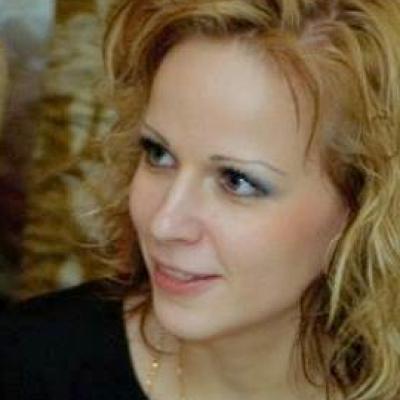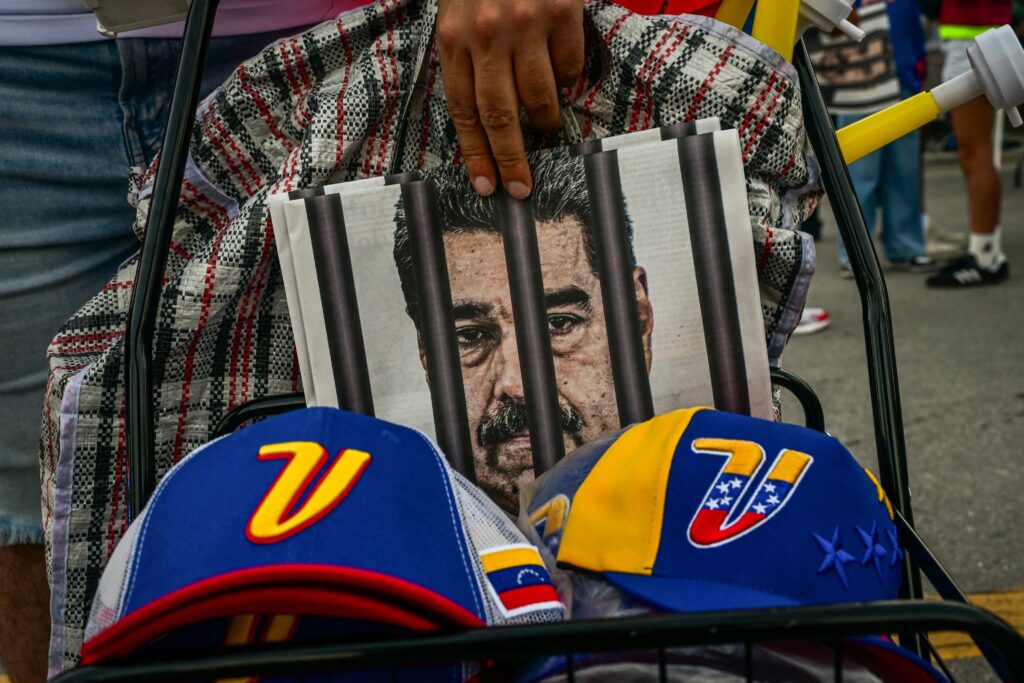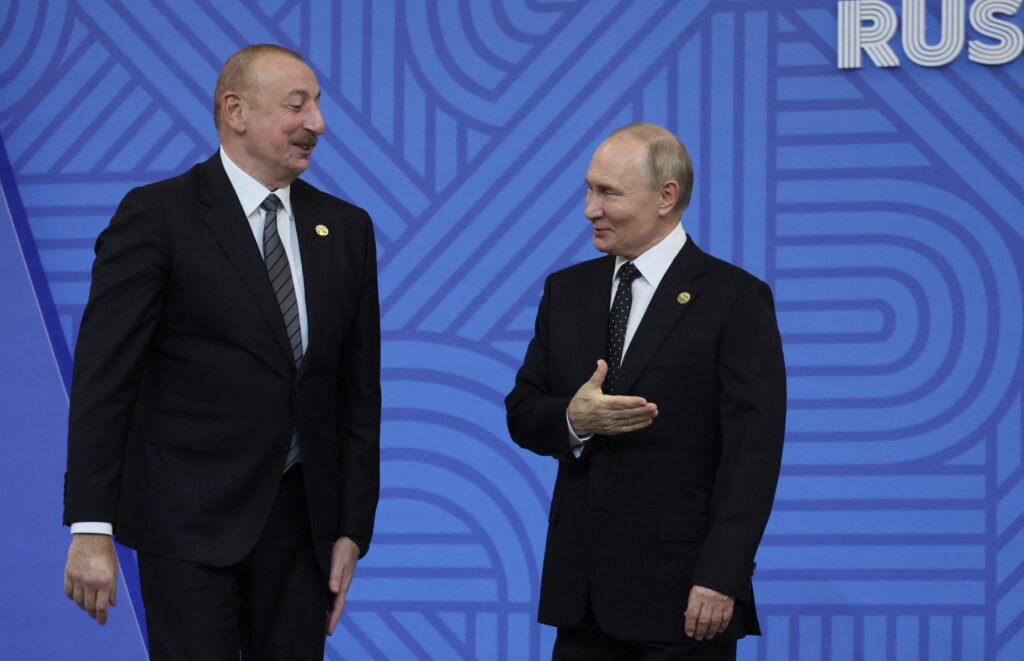Over the past three months, Russian-Ukrainian relations have been on a roller coaster; in summer 2019, we witnessed an unexpected detente, culminating in an exchange of prisoners of war in September after four years of stagnant enmity. Then, just two weeks after the first long-overdue success, a deep disappointment followed. On September 18, the Trilateral Contact Group on Ukraine failed to agree on a roadmap for the implementation of the so-called Steinmeier Formula, thereby postponing the prospect of a full-fledged Normandy Four summit in Paris. The carefully opened window of opportunity seems to have been slammed shut again. And the recent Ukraine-Gate in the U.S., which has seriously undermined President Volodymyr Zelensky’s position, will obviously be used by Moscow against the inexperienced Ukrainian leader.
Stage one: as long as it does not get worse
Zelensky’s election this year set off a dynamic period in Russian-Ukrainian relations. During the first stage, roughly from April to June, Russia showed reserve, coupled with spiteful pessimism. The Kremlin greeted the new Ukrainian head of state with a decree on a simplified procedure for residents of the so-called LPR and DPR to receive Russian citizenship; then came an expansion of that procedure to include all citizens of Ukraine; and it came alongside Putin’s reluctance to congratulate his new counterpart. In late April and early May, it seems, Moscow was preparing for the worst: Zelensky seemed to be a second edition of Petro Poroshenko, albeit much younger and more popular, unpredictable and dependent on Ihor Kolomoisky, a Ukrainian oligarch Putin had labelled as a crook back in 2014. Zelensky was perceived as ‘a pig in a poke’. The Kremlin did not understand his rhetoric, intentions or psychology of doing business. Having intended to play tough in bilateral relations, the Kremlin got ready for a traditional confrontation.
This was accompanied by an aggravation of the crisis of dialogue. There are four key formats for discussing the Ukrainian issue, and three of them have failed already. It seemed that the Normandy format had lost its momentum; bilateral relations were almost frozen; and Vladislav Surkov’s and Kurt Volker’s proposals were also a thing of the past. The only working mechanism was the Trilateral Contact Group on Ukraine, which wasn’t generating any real progress. The newly elected president immediately gave up on the mediation services of Viktor Medvedchuk (Putin is the godfather of Medvedchuk’s daughter) who in fact was the only link between the warring states at the time. He involved Leonid Kuchma, who is hated by Moscow, in the Trilateral Contact Group on Ukraine; and called for an expansion of the Normandy format to include the US and UK. An approach of ‘as long as it doesn’t get worse’ seemed to be the priority.
Stage two: in pursuit of success
Since July, practical mutual interest has reappeared in bilateral relations. July 11 marks a turning point in this respect. It is when Zelensky called Putin for the first time. It was preceded by a visit to Kyiv by editor-in-chief of the Echo of Moscow radio station Alexei Venediktov, to pass on to journalist Kirill Vyshinsky, accused of treason, a letter from his mother. According to Venediktov, during a meeting at the presidential office the Ukrainian party expressed an interest in the prospects for Zelensky to make a phone call to Putin. Apparently, Venediktov replied: ‘Let him call.’ No matter whether the Kremlin played a role in it, there was a certain readiness for the conversation on both sides. It is beyond doubt that the first step on the part of the Ukrainian leader was positively received by his Russian counterpart. As Venediktov later said in an interview with the website ‘Gordon’, it was during this phone call that a direct communication channel was established. Chiefs of staff Anton Vaino and Andrey Bogdan were entrusted with this task. Dmitry Kozak and Andrey Yermak became the direct operational counterparts. They were in charge of preparations for the prisoner exchange which brought home 70 prisoners, 35 on each side, on September 7.
Of course it is now important to understand the factors that contributed to the operation’s success. To begin with, the context was favourable. In May, Russia experienced the first positive post-Crimean development in relations with Europe; the most influential Western European states, such as Germany and France, restored the rights of the Russian delegation in PACE without demanding that the Russians do anything at all. It was reported then that the unofficial price for the return to PACE was the release of Ukrainian sailors. Unofficially, Moscow made commitments, although the two parties were not ready for a deal. The sailors did not return home, but both Ukraine and Russia probably felt they had something to discuss. Secondly, French President Emmanuel Macron unexpectedly revised his rhetoric. A key participant in the Normandy format, France, threw Ukraine under the bus, which revived hope that Europe would redirect pressure on Ukraine instead of Russia, since the Kremlin has long demanded the fulfilment of the political chapters of the Minsk Accords. Thirdly, the political success of Zelensky’s ‘Servant of the People’ party in the election to the Verkhovna Rada played an important role; the issue of the special status of the Donbas could not be seriously discussed with Zelensky unless he had a parliamentary majority in place.
The Ukrainian side also revised its rhetoric: Zelensky mentioned the importance of implementing the Minsk Accords and expressed interest in negotiating under the Normandy format. The young Ukrainian leader, who became successful out of the blue, was seeking to consolidate his electoral success and fulfil one of his main promises, namely to return hostages to their homeland. Poroshenko failed to achieve that for several years. The interests of both sides met, and political will emerged.
Stage three: disappointment and a dead end yet again
However, the potential for rapprochement was almost immediately exhausted. Zelensky tried to push forward and get a broader exchange of prisoners, but Russia was not ready for a new deal after the September exchange, perceived by the siloviki as a manifestation of weakness. Zelensky would like to see a ceasefire in the conflict zone and a guarantee of peace. However, these were precisely the disagreements that had brought relations with Russia to a halt under Poroshenko.
The Kremlin expected that the exchange of prisoners would set a positive example and give an impetus for the implementation of the 2015 agreements. This is an extremely important point; Moscow is not in any way inclined to discuss a review of these arrangements, aimed at ensuring the functioning of an autonomous, pro-Russian, self-perpetuating regime in eastern Ukraine which is recognised by Kyiv and the international community through the establishment of a special status for the Donbas under Ukraine’s Constitution. Therefore, Russia likes the Steinmeier formula (proposed in 2015 by the former Minister of Foreign Affairs and current president of Germany). The idea behind it is to make the political chapters of the Minsk Accords operational, namely to avoid talking about the constitutional consolidation of the special status of the Donbas (to limit oneself to the law) and conduct an election on the disputed territories under the oversight of international observers, and if there are no serious violations, to put the status of autonomy into effect. However, the issue of the Russian presence, as well as guarantees of taking Kyiv’s interest into account during the campaign, were disregarded under the formula.
Kyiv did not like the idea at all. It realised that Moscow wanted to elect a loyal and legitimate leadership of the DPR-LPR, automatically obtain a special status and rule the territory at its own discretion, and raise the region to its feet if Kyiv wants to accede to NATO. The Ukrainian leadership, exhausted by the war, had a different proposal: to carry out the election but ensure security first. In non-diplomatic language that means withdraw your Russian military presence from the DPR-LPR and let us conduct the election according to our laws. The Steinmeier formula puts Kyiv in a difficult position; it is tantamount to either peace and a lease of the Donbas in the hands of Russia or eternal warfare, i.e. a frozen but regularly flammable conflict. It is a no-win situation for Ukraine.
Hence, substantive negotiations on the conflict died out very quickly. Ukraine agreed to hold elections provided that the peacekeeping forces ensure security, while Russia ruled out such a scenario (at least in the form discussed by Kyiv, Europe and the US). Ukraine tried to discuss the Steinmeier formula by spelling out the conditions for all forces to have access to the election, but that ran into resistance from Moscow. The Kremlin did not want to be deprived of its political monopoly in the conflict zone. The preparation of the high-profile Normandy Four meeting was disrupted. Moscow accused Kyiv of undermining previous agreements and suspected Zelensky of playing both sides, and resumed its previous negative rhetoric. The differences in opinion on the Minsk Accords are too deep, and therefore any compromises are too dangerous for the countries’ political classes. Thus, significant rapprochement seems almost impossible today.
Ukraine-Gate is inevitably a new factor in the exacerbation of the conflict. Moscow cannot but take advantage of the Ukrainian leader’s vulnerable position; his lack of experience that has made him the target of criticism for his extremely controversial statements in a scandalous telephone conversation with Donald Trump. The Kremlin’s logic is simple: if there is a constructive dialogue, Russia might have an interest in strengthening Zelensky’s position. Whenever a subsequent exacerbation takes place, a bet on the weakening of the opponent takes place, including a bet on chaotization. The campaign against Zelensky has resumed, which will definitely not contribute to bilateral dialogue.
Two players, two sets
There are important processes within Russia which may affect the course of the seemingly hopeless conflict. In late August Aleksey Chesnakov unexpectedly revealed certain backstage details from the Kremlin, indicating two competing approaches to the Ukrainian issue. One of them, the inertia approach, is that of Surkov, linked in one way or another to the DPR or LPR. Surkov is personally (let’s not underestimate this factor) responsible for these territories; the return of these areas to Kyiv’s control, even under conditions of autonomy, may be psychologically difficult for him. ‘Blood has been spilled in Ukraine’ – these words by Chesnakov convey the severity of the description of the five-year conflict in Ukraine. It is not easy for the Russian regime to withdraw, including the dominant role of the siloviki in geopolitical decision-making. The latter is an obvious constraint on Russia in terms of initiatives aimed at a compromise.
The second approach by Chesnakov was criticised and was associated with the name of Dmitry Kozak. Kozak’s idea is presented in the following simplified way: ‘The Donbas must be handed over to someone, to avoid additional costs and get sanctions lifted.’ Let us not go into detail about the sanctions policy, the interest of the West and the price of the Donbas and related costs. Something else is important, namely that for the first time the Kremlin’s discussions about the price that Russia is prepared to pay to keep Ukraine in check have been publicly articulated.
Ideologically, Putin is close to going with the tide. His position is defended by Surkov. However, the devil is in the details. Russia is getting ready for a transformation of regime, a shift of power, and the issue might gain importance. Ensuring the geopolitical stability of Russia’s environment may gain importance against the backdrop of internal restructuring. In this case, Moscow’s foreign policy priorities may be in favour of a more pragmatic approach.
An update from 02/10/2019:
A Small Step for Ukraine, a Giant Leap for Russia
On 1 October the Ukrainian government signed off on the Steinmeier Formula, a move which some regard as a “breakthrough” in resolving the Ukraine crisis. However, on closer inspection there are few reasons for optimism. In fact, Kyiv’s approval of the agreement brings Moscow one step closer to its main objective: holding elections in eastern Ukraine which would guarantee the Donetsk and Luhansk “People’s Republics” a special political status. This is a smaller step for Ukraine, although it is the first one towards opening up a broader discussion about how to implement the Minsk Agreements and the conditions under which elections in the east can be held. President Volodymyr Zelensky immediately made it clear that unless Kyiv regained control of the border with Russia, there could be no elections. These words illustrate that Kyiv continues to prioritise security considerations over the political element of the Minsk Agreements. This is probably an unrealistic position to hold in the bargaining to come; based on the current state of affairs, it is clear that holding any elections under the full control of pro-Russian forces will be impossible. These forces already dictate the content of the future law on the eastern regions’ special status, despite the fact that aspects of the law concern fundamental issues of state sovereignty, such as domestic and foreign policy, budgetary and taxation policies, and independent law enforcement bodies. Russia will have to make some concessions on this if the Kremlin really wants to see progress.
In this sense, signing the Steinmeier Formula was a necessary step in order to advance to a higher level of negotiations. Namely, the Normandy Summit, in which the Russian side has refused to participate until Ukraine signed the agreements it deemed appropriate. And even this is no firm guarantee of anything, as the Kremlin makes further demands. It demands that heavy weaponry be removed from the villages of Zolotoye and Petrovskoye. It demands the right of preliminary approval of the summit’s final document, meaning that the negotiations be steered in a direction favourable to Moscow’s agenda. Therefore, the only tangible outcome of the latest meeting in Minsk is a step towards further negotiations in Paris — and this can no means be considered an important advancement in the peace settlement.
Nevertheless, another question must be considered against the background of all these pessimistic assessments: is progress towards resolving the conflict in eastern Ukraine even possible? Even the pessimists must admit that there is some scope for reconciliation. Ukraine is ready to pass a law about the regions’ special status; in return, Russia must not make radical demands, such as the removal of the Donbas region from Ukraine’s legal framework. Security can be provided by a limited contingent of peacekeepers; Moscow was also prepared to discuss this option. Finally, elections can be held in the Donetsk and Luhansk “People’s Republics,” although these will of course confirm the strong Russian influence on the region.. However, as interaction with the regimes in the breakaway republics remains completely unacceptable for Kyiv, Moscow would have to undertake a deep restructuring of the power structures in the Donetsk and Luhansk “People’s Republics,” in favour of more pro-Ukrainian ones. This too is a possible field of reconciliation, but will present a serious test to both sides involved given the likelihood of domestic repercussions.










